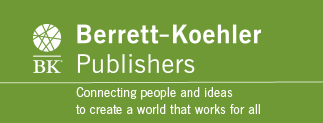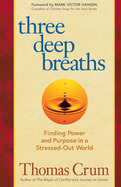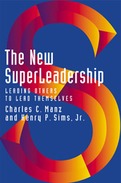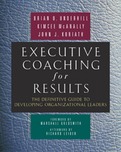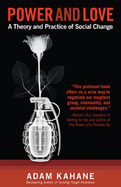2009
• By the author of the bestsellers The Magic of Conflict and Journey to Center
• Uses a story format to teach a simple and effective technique for achieving calm in the midst of chaos and transforming stress into positive energy
Making the Grass Greener on Your Side is the story of how Ken Melrose adopted a philosophy of leading by serving and made it work in a real-world-and often challenging-situation. His mission as CEO of The Toro Company has been to build an environment that not only serves the needs of the corporation, but also provides a climate for its constituents-the employees-to grow and develop as human beings. In Making the Grass Greener on Your Side, he shows how cultivating an environment for individual growth creates a win-win situation for the company and the employee.
In the "servant leadership" model, leaders operate from a principle-centered base by working for and serving the rest of the organization. This approach allows employees to grow and contribute in ways that best serve the long-term interests of the company. Melrose tells of both the successes and struggles in applying the model to the Toro environment.
This book follows Toro's history-beginning in 1979, when Toro had reached a peak of unparalleled expansion and development, to the brink of disaster in 1981, and back again. Readers will learn about the company's cut-backs and sacrifices, its self-examination, its decision to embark on the path of servant leadership, and its ultimate return to profitability and customer satisfaction. Melrose recounts his own process of refining his personal commitment to leadership principles and gaining the courage to implement fundamental changes. He tells which culture initiatives and leadership strategies the company applied, which worked, and why.
Making the Grass Greener on Your Side helps readers take stock of where their company is now, and shows how to cultivate the soil and prepare a "seed-bed" that will allow for the deep rooting of value-centered leadership principles. Melrose tells how to develop a culture that will allow for sustained growth, and describes the abundant fruits of the long-term approach that occur all along the journey.
- By the CEO of The Toro Company, a member of the Fortune 500
-
Thoroughly revised and updated edition of bestselling SuperLeadership
-
Features numerous real-life stories of how leaders have achieved greater success through bringing out self-leadership in others
-
Even more essential now than when first published
• Explores how even small changes in the way we talk with one another can produce extraordinarily positive outcomes
• Describes how to get maximum results from four types of conversations we use every day
• Research-based and practical, with sample dialogues and personal stories that show how to put the four conversations into practice
Talk is powerful. Engaging in the right conversation at the right time is key to both personal and organizational success. And it isn’t just ‘difficult’ conversations that matter. The Four Conversations clearly demonstrates it is the everyday dialogue we have with one another that is critical.
Armed with a solid body of research and their own first-hand observations, Jeffrey and Laurie Ford identify four types of conversations that every one of us must use to get things done: initiative conversations to introduce something new; understanding conversations to help people relate to new ideas or processes; performance conversations to request specific actions and results; and closure conversations to complete work and give people a sense of accomplishment . They identify the specific elements that make each of these conversations successful and show how they can be put together in different ways to achieve different objectives.
The Four Conversations demonstrates how to use the right conversation at the right time—planning and starting each one well, and finishing every conversation effectively—to produce the results we want and the improved productivity our organizations need. And through dozens of personal stories and sample dialogues, the authors illustrate how real people in real situations have used the four conversations, either alone or in combination, to more effectively combat common workplace problems and lay the foundations for enduring success: stronger relationships, better buy-in, and a greater feeling of personal and professional achievement for everyone.
Executive Coaching for Results helps this critical leadership development method come of age. This is not a “how-to-coach book”—there are already plenty of those—but rather a comprehensive guide on how to strategically use coaching to maximize development of talent and link the impact of coaching to bottom-line results. Underhill, McAnally, and Koriath draw on their rigorous original research (through Executive Development Associates) with Fortune 1000 and Global 500 companies such as Disney, IBM, UBS, Unilever and many others,
and combine that with their years of industry experience to advance the state of the art.
Executive Coaching for Results includes topics such as:
Integrating coaching into your organization's overall leadership development strategy
Locating and screening coaches worldwide
Developing an internal coaching program
Deciding which coaching assessments and instruments are appropriate to your situation
Measuring the impact and ROI of coaching
Following up after coaching
Throughout, the authors provide numerous examples from major organizations such as Dell, Johnson and Johnson, Intel, and Wal-Mart. Offering practical learning, best practices, and illuminating case studies, this is the first definitive guide to the effective use of executive coaching in the corporate environment.
•The first comprehensive guide to using executive coaching in
organizations
• Based on the authors’ rigorous original research with dozens of leading companies
•Includes extensive case studies, examples of coaching tools, advice on measuring ROI, and much more
2010
-
A new approach, proven in the field, for making progress on our most important and difficult collective challenges
-
Based on Kahanes first-hand experiences working with teams of business, government and civil society leaders around the world
-
Profound, personal and practical
The two main ways that people try to solve their toughest group, community and societal problems are fundamentally flawed. They either push for what they want at all costsin its most extreme form this means waror try to completely avoid conflict, sweeping problems under the rug in the name of a superficial peace. But there is a better way: combining these two seemingly contradictory approaches.
Adam Kahane argues that each is a reflection of two distinct, fundamental drives: power, the single-minded desire to achieve ones solitary purpose; and love, the drive towards unity. They are inextricable parts of human nature, so to achieve lasting change you have to able to work fluidly with both. In fact, each needs the other. As Martin Luther King put it, Power without love is reckless and abusive, and love without power is sentimental and anemic.
Kahane delves deeply in the dual nature of power and love, exploring their complex and intricate interplay. With disarming honesty he relates how, through trial and error, he learned to balance between them, shifting from one to the other as though learning to walkat first falling, then stumbling forward, and finally moving purposefully toward true, lasting reconciliation and progress.
For the last twenty years Kahane has worked around the world on a variety of challenges: economic development, food security, health care, judicial reform, peace making, climate change. He has worked with diverse teams of leadersexecutives and politicians, generals and guerillas, civil servants and trade unionists, community activists and United Nations officials, clergy and artists. He has seen, up close and personal, examples of inspiring progress and terrifying regress. Power and Love reports what he has learned from these hard-won experiences.
